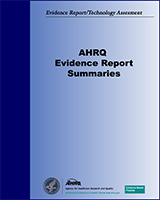From: 43, Making Health Care Safer: Summary

AHRQ Evidence Report Summaries.
Rockville (MD): Agency for Healthcare Research and Quality (US); 1998-2005.
NCBI Bookshelf. A service of the National Library of Medicine, National Institutes of Health.
|
Item |
Patient Safety Problem |
Patient Safety Practice |
Implementation Cost/Complexity |
|
1 |
Venous thromboembolism (VTE) |
Appropriate VTE prophylaxis (Ch. 31) |
Low |
|
2 |
Perioperative cardiac events in patients undergoing noncardiac surgery |
Use of perioperative beta-blockers (Ch.25) |
Low |
|
3 |
Central venous catheter-related bloodstream infections |
Use of maximum sterile barriers during catheter insertion (Ch. 16.1) |
Low |
|
4 |
Surgical site infections |
Appropriate use of antibiotic prophylaxis (Ch. 20.1) |
Low |
|
5 |
Missed, incomplete or not fully comprehended informed consent |
Asking that patients recall and restate what they have been told during informed consent (Ch. 48) |
Low |
|
6 |
Ventilator-associated pneumonia |
Continuous aspiration of subglottic secretions (CASS) (Ch. 17.2) |
Medium |
|
7 |
Pressure ulcers |
Use of pressure relieving bedding materials (Ch. 27) |
Medium |
|
8 |
Morbidity due to central venous catheter insertion |
Use of real-time ultrasound guidance during central line insertion (Ch. 21) |
High |
|
9 |
Adverse events related to chronic anticoagulation with warfarin |
Patient self management using home monitoring devices (Ch. 9) |
High |
|
10 |
Morbidity and mortality in post-surgical and critically ill patients |
Various nutritional strategies (Ch. 33) |
Medium |
|
11 |
Central venous catheter-related bloodstream infections |
Antibiotic-impregnated catheters (Ch. 16.2) |
Low |
Items within a particular category are not necessarily in rank order. Items are for reference only.
Abbreviations: Ch. = Chapter
From: 43, Making Health Care Safer: Summary

NCBI Bookshelf. A service of the National Library of Medicine, National Institutes of Health.